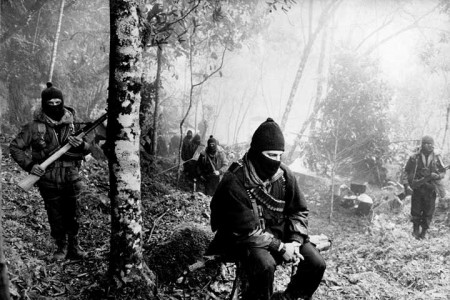On January 1st 1994, the day that the North American Free Trade Agreement (NAFTA) was put into effect, armed indigenous peasants occupied four towns in the Chiapas highlands including San Cristobal de las Casas. The Zapatista National Liberation Army (EZLN) denounced NAFTA as a “death sentence” for Mexican Indians and demanded government recognition as a legitimate belligerent force in their Declaration from the Lacandona Jungle.
While taking their name from the Mexican revolutionary Emiliano Zapata, the EZLN broke the usual mould of revolutionary groups. Since the initial armed uprising in the first two weeks of 1994, they have not used weapons or bombs and have remained primarily in Chiapas.
The Zapatistas refuse to accept the legitimacy of Mexican official channels for seeking change. They claim that elections have been ineffective for the indigenous and for most Mexicans in the 500 years since the Spanish conquest. Their slogan ¡Ya Basta! “Enough!” reflects this stance of resistance. Some argue that this tactic of refusal to engage or to compromise leaves the indigenous cause and economic development in a permanent limbo. The Zapatistas counter that they are demanding rights not concessions.
Their peaceful approach and their media savvy have made them uniquely popular with large sectors of the civilian population in Mexico and their use of the Internet has made them popular with the international anti-globalization movement.
Links:
- A brief history of the Zapatistas on Wikipedia.
- The Zapatistas in Cyberspace.
